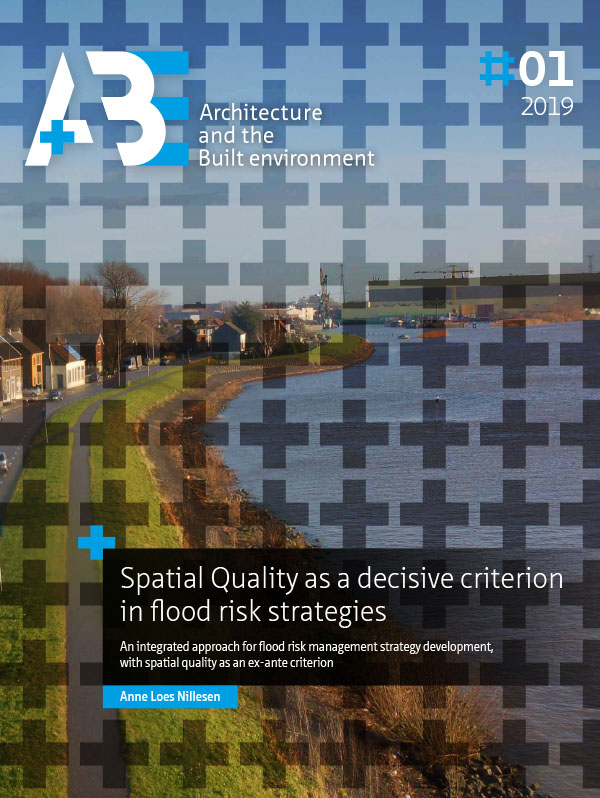The Synergy Between Flood Risk Reduction and Spatial Quality in Coastal Cities
DOI:
https://doi.org/10.7480/abe.2019.1.3740Abstract
This paper describes the application of a research-by-design approach that aims for a combined approach for spatial quality enhancementand flood risk reduction, with spatial quality as a decisive exante criterion. In order to achieve this, as in the ‘Room for the River’ programme, a dual flood risk and spatial quality objective is set. This research was performed as part of the ‘Atelier for Coastal Quality’, in which The Hague’s seaside area of ‘Scheveningen’ was selected as a case study location.Here, the future reinforcement of the sea barrier could be combined with addressing the challenges of improving spatial quality, among which are: identity, vitality, attractiveness, and connectivity.
A research-by-design approach was deployed in which a single parameter was systematically varied (the flood risk intervention) while fixing other parameters (such as the context and the objectives from a spatial and flood risk perspective). After exploring and defining both the flood risk and spatial objectives for the area, three alternative flood risk reduction strategies (based on three alternative interventions: a boulevard, dunes, and a perpendicular dam) for Scheveningen were developed. In order to facilitate the integrated design process, ‘Delta Ateliers’, in which multidisciplinary experts and stakeholders interactively worked together, were successfully deployed.
As a result, it became apparent that the inclusion of a prominent spatial objective is not the main key to including spatial quality as an ex-ante decisive criterion in defining flood risk strategies. The three proposed flood risk reduction interventions had all been successfully embedded with regard to meeting the prescribed spatial criteria, thereby disqualifying the spatial aspects as selection criteria for the flood risk intervention. However, as part of the study, a supporting research-by-design exercise was performed in which three different locations for the positioning of the perpendicular dam, were explored from a spatial perspective. Here, it seemed that providing interchangeable (similarly effective) interventions at different locations did result in very different potentials for spatial quality, thus allowing spatial quality to become a decisive selection criterion.
The ‘Room for the River’ principle, which appeared essential in order to include spatial quality as a decisive ex-ante criterion, is the creation of alternative exchangeable options for the flood risk reduction interventions at different locations. Based on these findings, the research-by-design approach deployed is extended to not only systematically test different interventions, but to also systematically vary the location of the intervention. The ‘Delta Atelier’ multidisciplinary workshop approach is continued within the remaining research.

